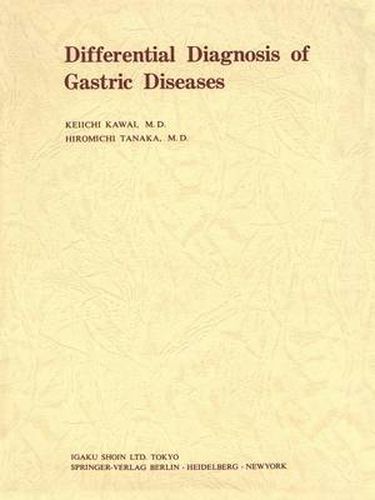Readings Newsletter
Become a Readings Member to make your shopping experience even easier.
Sign in or sign up for free!
You’re not far away from qualifying for FREE standard shipping within Australia
You’ve qualified for FREE standard shipping within Australia
The cart is loading…






This title is printed to order. This book may have been self-published. If so, we cannot guarantee the quality of the content. In the main most books will have gone through the editing process however some may not. We therefore suggest that you be aware of this before ordering this book. If in doubt check either the author or publisher’s details as we are unable to accept any returns unless they are faulty. Please contact us if you have any questions.
This book is intended to systematically explain our clinical experience with gastric diseases. We have concentrated on how to avoid overlooking changes on the gastric walls and how to improve diagnostic differentiation of these changes on the basis of the findings. It is difficult to differentiate malignancy from benignancy when the change is a minor or a very small one. Because of this, we have thoroughly classified protruding lesions and eXc:lvated lesions for diagnosis. The criterion adopted for classification is the commonly observed uneven ness of each gastric area. If the change protrudes higher than normal from the mucous mem brane, it is classified as a protruding lesion, and if it is deeper seated, as an excavated lesion. Differentiation follows diagnosis of the presence of disease. The whole process has been described concretely. There often are small size changes which have not been detected by cautious x-ray exami nations and are discovered by endoscopic observations. This book describes the techniques of endoscopic and radiologic examinations and the principles of macroscopic diagnosis based on our experiences. If the detected change is a protruding lesion, the following findings are necessary for differ entiation: 1) size and shape, 2) height, 3) nodular appearance over the protuberant surface, 4) color tone, and 5) morphology of the protuberance. In an excavated lesion: 1) size and shape, 2) depth, 3) nodular appearance at the bottom of the excavation, 4) color tone, 5) border region of the excavation, and 6) nature of the mucous folds.
$9.00 standard shipping within Australia
FREE standard shipping within Australia for orders over $100.00
Express & International shipping calculated at checkout
This title is printed to order. This book may have been self-published. If so, we cannot guarantee the quality of the content. In the main most books will have gone through the editing process however some may not. We therefore suggest that you be aware of this before ordering this book. If in doubt check either the author or publisher’s details as we are unable to accept any returns unless they are faulty. Please contact us if you have any questions.
This book is intended to systematically explain our clinical experience with gastric diseases. We have concentrated on how to avoid overlooking changes on the gastric walls and how to improve diagnostic differentiation of these changes on the basis of the findings. It is difficult to differentiate malignancy from benignancy when the change is a minor or a very small one. Because of this, we have thoroughly classified protruding lesions and eXc:lvated lesions for diagnosis. The criterion adopted for classification is the commonly observed uneven ness of each gastric area. If the change protrudes higher than normal from the mucous mem brane, it is classified as a protruding lesion, and if it is deeper seated, as an excavated lesion. Differentiation follows diagnosis of the presence of disease. The whole process has been described concretely. There often are small size changes which have not been detected by cautious x-ray exami nations and are discovered by endoscopic observations. This book describes the techniques of endoscopic and radiologic examinations and the principles of macroscopic diagnosis based on our experiences. If the detected change is a protruding lesion, the following findings are necessary for differ entiation: 1) size and shape, 2) height, 3) nodular appearance over the protuberant surface, 4) color tone, and 5) morphology of the protuberance. In an excavated lesion: 1) size and shape, 2) depth, 3) nodular appearance at the bottom of the excavation, 4) color tone, 5) border region of the excavation, and 6) nature of the mucous folds.